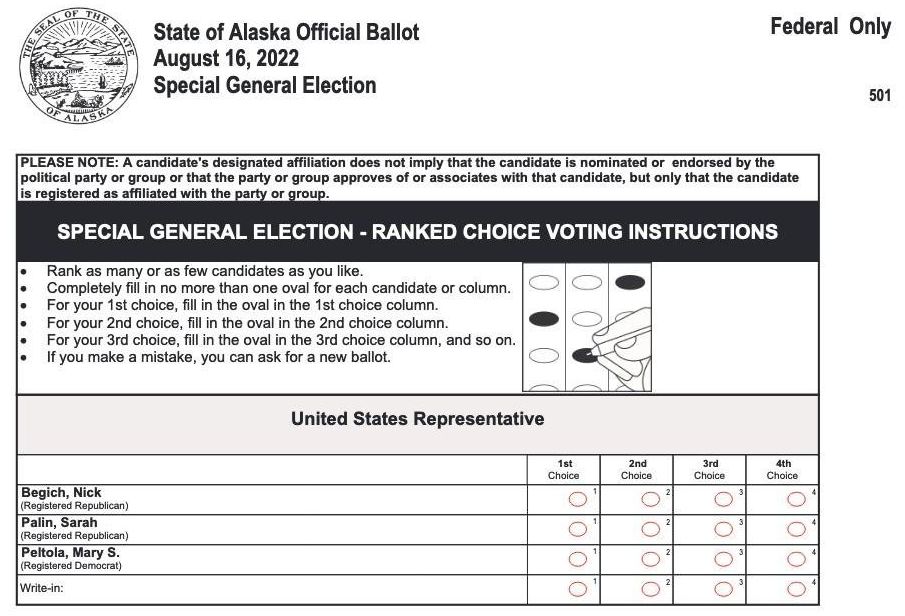Landry is the facilitator of the League of Women Voters of Colorado’s Alternative Voting Methods Task Force. An earlier version of this article was published in the LWV of Boulder County’s June 2023 Voter newsletter.
The term “ranked-choice voting” is so bandied about these days that it tends to take up all the oxygen in any discussion on better voting methods. The RCV label was created in 2002 by the city of San Francisco. People who want to promote evolution beyond our flawed plurality voting are often excited to jump on the RCV bandwagon.
However, many people, including RCV advocates, are unaware that it is actually an umbrella term, and ranked-choice voting in fact exists in multiple forms. Some people refer to any alternative voting method as RCV — even approval voting and STAR Voting, which don’t rank candidates! This article only discusses voting methods that do rank candidates.
Why should we learn about different voting methods?
If you are in the market for a new house or car, you don’t usually buy the first house you visit or the first car you test drive; rather, you shop around. Similarly, the League of Women Voters of Colorado would like activists to consider different voting methods before advocating for a particular method in a particular situation.
Plurality voting is the simplest and most familiar of voting methods. Also known as “first past the post” voting, it works well if a ballot lists only two candidates for a given position.
If our goal is better representative democracy, however, we should strive to adopt voting methods that allow voters to express their preferences more effectively, that encourage more candidates to run and that reduce the so-called spoiler effect, by which a less-popular candidate wins when the spoiler candidate draws sufficient votes away from a popular but similar candidate.
How are ranked-voting methods similar and different?
A voting method has at least two components:
- Ballot format, with directions to voters for casting a valid ballot.
- Tabulation method, of interest to election administrators, candidates, and voters.
In a December 2022 Fair Vote Canada video, professor Dennis Pilon named a third component: district magnitude, or the number of seats to be filled in a ballot contest. We take this component into account by distinguishing between single-winner and multi-winner contests.
Ballot formats for a variety of ranked-voting methods contain the same basic directions: “Rank candidates in order of preference.” In practice, the directions amount to “Fill in at most one bubble per column and one bubble per row.” Voters should always fill in at least a first choice. Below is the ranked ballot that was used in the August 2022 Alaska special election.

The tabulation method is what differentiates the various ranked-voting methods.
First, consider what is unique to RCV tabulation methods, i.e., what defines RCV: All forms of RCV allow for rounds of counting in which the candidate with the fewest votes is eliminated and votes for that candidate are transferred to the next-highest-ranked candidate on the ballot.
Within this RCV constraint, tabulation methods can differ widely. The table below lists seven different RCV tabulation methods. (Note that yet another method called RCV in
a New Hampshire bill would have allowed voters to give the same ranking, such as the top spot, to multiple candidates, but it did not pass in the 2018 legislative session.)
Unfortunately, the media and activists often conflate single-winner and multi-winner versions of RCV — claiming, for instance, that RCV leads to proportional representation when that statement is true for only some of the multi-winner forms of RCV.
Forms of RCV Key: SW= single winner, MW = multiple winners | |||
Voting Method | SW or MW? | How It Works | Where It’s Used Some jurisdictions currently or planning to use this form of RCV |
Instant-Runoff Voting (IRV) - What most people think of as “RCV” video [ Video c orrection: Only a 1st-round winner is guaranteed a majority of all votes] | SW | If no candidate gets a majority of votes in the first round of counting, then the lowest vote-getters are eliminated round-by-round and their votes transferred to the next available ranking on the ballot until 1 candidate has more votes than the remaining candidates combined. | San Francisco, Santa Fe, Maine, New York City and more than a dozen other places; Boulder in 2023 for its first mayoral election |
Top-4 Plurality primary with an IRV general election, similar to Final-Five Voting | (MW then) SW | All candidates run against each other in a Plurality “choose-one” primary election. The top 4 candidates proceed to an IRV general election. Unlike regular IRV, this version does not eliminate a second election. | Alaska since August 2022 |
Contingent Vote (3 or more rankings) or Supplementary Vote (only 2 rankings) | SW | All but the top 2 vote-getters are eliminated in the first round of counting. Votes for eliminated candidates are transferred to the highest ranked of the 2 remaining candidates on each ballot. | NC Court of Appeals 2010; London, UK; Overseas voters in AR, AL, GA, LA, MS and SC mark a regular primary ballot and a ranked ballot that counts if there is a top-2 runoff |
Single Transferable Vote (STV),
aka
Proportional RCV (pRCV) [ a “gold standard” proportional voting method to elect people] | MW | Candidates who receive the threshold of votes are elected. Any surplus votes are transferred to the next highest available ranking. Lowest vote-getters are eliminated round-by-round and their votes transferred to the next available ranking on each ballot until all seats are filled. | Cambridge, MA since 1941; Albany, CA as of 2022; some members of two boards in Minneapolis; Portland, OR starting in 2024; Boulder, CO 1917-1947; Australia Senate; Ireland lower house |
Bottoms-Up 15% Threshold RCV [ determine proportional allocations] | MW | Conduct IRV tabulation rounds but don’t stop until all remaining candidates have at least 15% support, whereupon candidates’ delegates are proportionally allocated. | 2020 Alaska, Hawaii, Kansas and Wyoming Democratic presidential primaries to allocate delegates to the national nominating convention |
Bottoms-Up Top-2 RCV primary with a “choose-one” general election | MW (then SW) | Conduct IRV tabulation rounds until 2 candidates remain. Voters vote again in a runoff election to decide which of the 2 primary winners gets the seat. | Seattle starting in 2027 |
Preferential Block Voting (PBV),
aka
Sequential RCV [ NOT proportional; a plurality of voters may elect all the winners] | MW | The first seat is filled using an IRV tabulation. Then all ballots are tabulated again using IRV but ignoring the winning candidate. The process is repeated until all seats are filled. (In the video some voters help elect 3 candidates, while voters who ranked Yellow #1 don’t help elect any.) | Utah municipalities may opt into an IRV and PBV pilot project through the 2025 elections. In 2022 Portland, ME voters approved changing from PBV to proportional STV. |
Now we’ll consider some non-RCV ranked-voting methods. The first four methods listed have all mistakenly been called RCV in Colorado in the past few years!
Forms of Non-RCV Ranked Voting (includes only single-winner voting methods) | |||
Voting Method | How It Works | Where It’s Used | |
Insurance Ranking [The ballot’s vote is solely dependent on candidate eligibility, not on the tabulation process.] | If the ballot’s 1st-choice candidate dies, withdraws or is disqualified after the voter has returned their ballot but before Election Day, the vote counts for the next ranking. | 2023 Colorado Senate Bill 301 would have allowed military and overseas voters to use this for the 2024 presidential primary election (but the bill died in committee). | |
Borda Count | Assigns the largest point value to a voter’s 1st choice, 2nd largest to the voter’s 2nd choice, and so on. The candidate with the largest point total wins. | In some overseas political elections and in various organizations and institutions – see Survey Monkey’s Ranking ballot | |
Bucklin Voting, aka Grand Junction System | If no candidate gets a majority of 1st-choice rankings, then 2nd-choice rankings are added to the total. If still no candidate gets a majority, then 3rd-choice rankings are added in. | In more than 60 US cities in the early 20th century, including Denver, Grand Junction, Colorado Springs, San Francisco, Cleveland, Newark, and St Petersburg | |
Count the Rankings [ arguably more a presentation of raw data than a tabulation method] | Voters must rank all candidates. Count and report the number of 1stchoices, the number of 2ndchoices, and so on for each candidate. | In organizations using Microsoft 365’s Ranking form | |
Condorcet Method [actually, a family of voting methods, including Ranked Robin, Minimax, and Schulze} | The candidate that defeats all the opponents in pairwise matchups is the Condorcet winner. If no Condorcet winner exists, each method has a rule to determine a winner. | Mostly by organizations and political parties overseas, as well as high-tech organizations, such as IEEE. A few overseas municipalities use Schulze. | |
Coombs’ Rule [ The video contrasts IRV and Coombs’ Rule.] | If no candidate gets a majority on the 1st round, then the candidate with the most last-place votes is eliminated. The process is repeated until one candidate wins. | A variant is used on the “Survivor” reality TV program | |
Now what?
So, how do you now approach conversations about voting methods? To cover all bases, consider following the example of the Colorado secretary of state and Colorado statutes: don’t use the term “RCV,” but rather the super-umbrella term “ranked voting.” And, if someone mentions RCV or ranked voting, here’s a good first question to ensure that everyone is on the same page: “Which form of RCV or ranked voting are you talking about?”
Who knew there were so many forms of ranked voting? Well, now
you know.




















